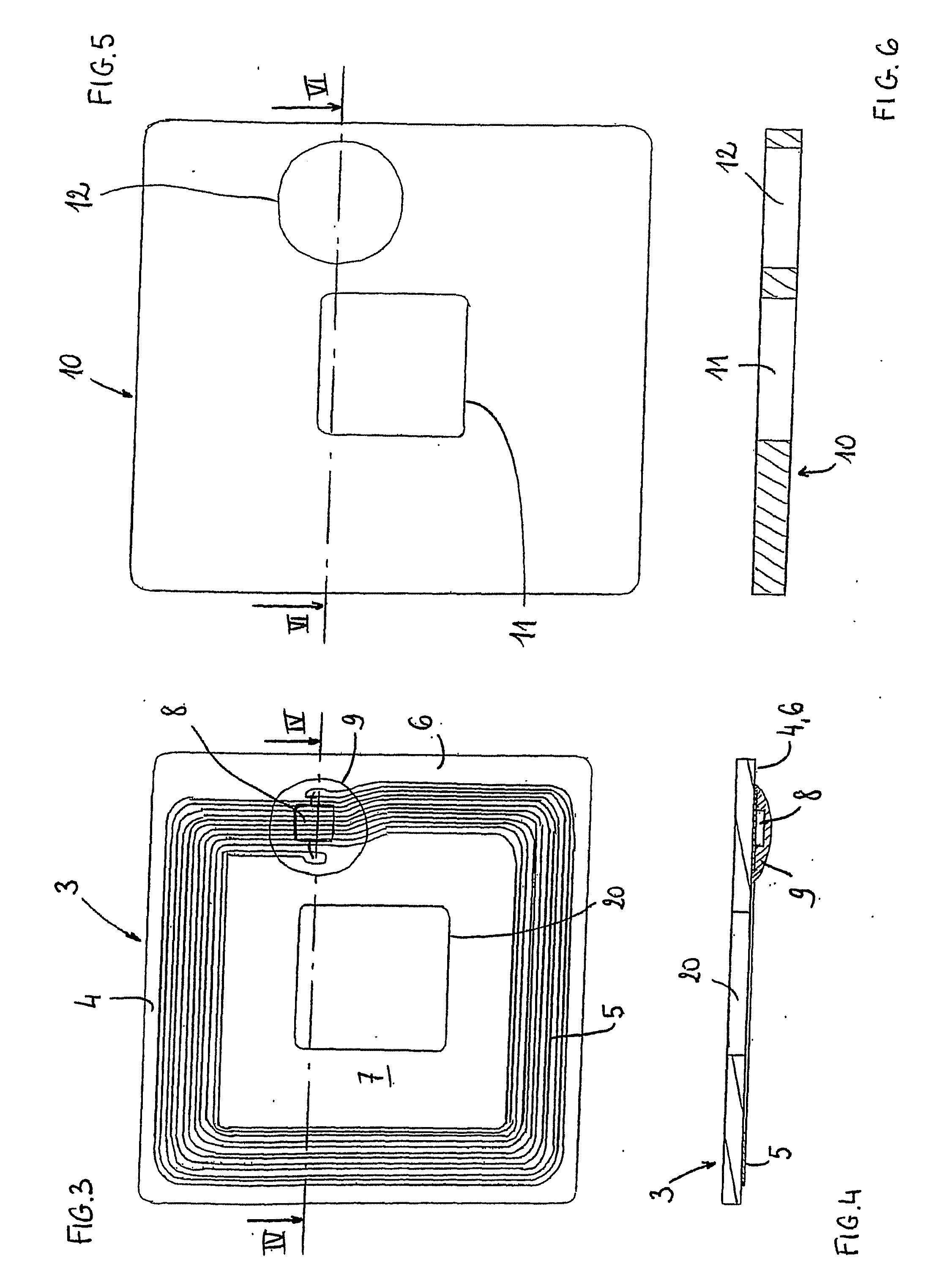Radiofrequency identification device and method for producing said device
a radiofrequency identification and tag technology, applied in the direction of instruments, electrical equipment, antennas, etc., can solve the problems of chip damage, affecting the proper functioning of the tag, and the tag b>100/b> affixed to the support b>101/b> may become unstuck, so as to improve the strength of the assembly
- Summary
- Abstract
- Description
- Claims
- Application Information
AI Technical Summary
Benefits of technology
Problems solved by technology
Method used
Image
Examples
first embodiment
[0058] the tag 1 is produced by lamination.
second embodiment
[0059] the tag 1 is produced by moulding. It may be injection moulding, moulding by gravity casting, at ambient temperature or with heating.
[0060]Whatever embodiment is adopted, in the course of forming the tag 1, on the one hand, the first layer 15 of the envelope 14 penetrates the orifice 12, thus embedding the potting 9. It should be noted that this does not cause a localized lack of thickness in the tag 1. On the other hand, the layers 15, 16 of the envelope 14 penetrate the through holes 11, 20, which enables good adhesion of these layers to one another.
[0061]Although the envelope 14 has been presented as consisting of two distinct layers 15, 16 (which is the case in particular for lamination), the envelope 14 may also be formed of only a single piece (for example if it is obtained by moulding).
[0062]The tag 1 may finally comprise an adhesive layer 19 joined to the first layer 15 of the envelope 14. The adhesive layer 19 has, for example, a thickness close to 170 μm.
[0063]The t...
PUM
| Property | Measurement | Unit |
|---|---|---|
| thickness | aaaaa | aaaaa |
| thickness | aaaaa | aaaaa |
| diameter | aaaaa | aaaaa |
Abstract
Description
Claims
Application Information
 Login to View More
Login to View More - R&D
- Intellectual Property
- Life Sciences
- Materials
- Tech Scout
- Unparalleled Data Quality
- Higher Quality Content
- 60% Fewer Hallucinations
Browse by: Latest US Patents, China's latest patents, Technical Efficacy Thesaurus, Application Domain, Technology Topic, Popular Technical Reports.
© 2025 PatSnap. All rights reserved.Legal|Privacy policy|Modern Slavery Act Transparency Statement|Sitemap|About US| Contact US: help@patsnap.com



